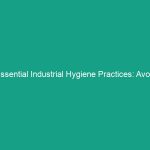Introduction
Good morning team! Today, we’re going to talk about an essential topic that affects us all: Essential Utility Vehicle Safety at Home and Work. Understanding the importance of Safety when operating utility vehicles is paramount for ensuring not only your safety but also the safety of your coworkers, friends, and family. With the increasing use of these vehicles in various settings, it’s crucial to be aware of the risks involved and how we can mitigate them. So, let’s dive into why this topic is significant and how we can all stay safe.
Understanding Essential Utility Vehicle Safety
Essential utility vehicle safety refers to the practices and protocols that are put in place to ensure safe Operation of vehicles like golf carts, ATVs, and UTVs (Utility Task Vehicles) both at home and in the workplace. These vehicles can be incredibly useful for transporting people and equipment, but they can also pose serious risks if not handled properly. The importance of adhering to Safety Measures cannot be overstated—accidents can lead to severe injuries or even fatalities.
Many people believe that since these vehicles are designed for utility, they are inherently safe. This misconception can lead to complacency in adhering to safety protocols. In reality, utility vehicles require the same level of caution and respect as any other vehicle on the road.
Key Hazards, Risks, and Safety Considerations
When it comes to utility vehicle safety, several key Hazards and risks need to be addressed:
- Operator Inexperience: Many accidents happen when operators are inexperienced or lack proper Training.
- Overloading: Exceeding the vehicle’s weight limit can cause loss of control and increase the risk of tipping over.
- Terrain Challenges: Uneven or unfamiliar terrain can lead to accidents, particularly if the vehicle is not designed for such conditions.
- Visibility Issues: Poor visibility can lead to collisions with obstacles or other individuals.
- Inadequate Maintenance: Failing to perform regular maintenance checks can lead to mechanical failures while operating the vehicle.
Ignoring these risks can lead to severe consequences, including injuries, property damage, and even legal repercussions. Understanding these hazards is the first step toward effective risk management.
Best Practices, Procedures, & Actionable Advice
To mitigate the risks associated with utility vehicles, here are some Best Practices and Procedures that you should follow:
1. Training and Certification
Ensure that all operators are properly trained and certified to use utility vehicles. This training should include:
- Understanding vehicle controls and operation.
- Safety features of the vehicle.
- Recognizing and mitigating potential hazards.
2. Pre-Operation Checks
Before using a utility vehicle, conduct a thorough pre-operation check that includes:
- Inspecting brakes, lights, and tires.
- Checking for leaks or mechanical issues.
- Ensuring all safety equipment is in place.
3. Weight Limits
Always adhere to the vehicle’s weight limit. Overloading can compromise the vehicle’s stability. Make sure to:
- Distribute the weight evenly.
- Avoid carrying passengers unless the vehicle is designed for it.
4. Terrain Awareness
Be mindful of the terrain you are operating on. If you are on an uneven surface, slow down and drive carefully. Here are tips for navigating various terrains:
- Stay on designated paths and avoid Hazardous Areas.
- Use caution when approaching slopes and inclines.
5. Visibility and Communication
Ensure that you have a clear line of sight when operating a utility vehicle. Use mirrors and always signal your intentions to others around you. Here’s how you can improve visibility:
- Keep the vehicle’s lights in working order.
- Wear high-visibility clothing when working in low-light conditions.
6. Regular Maintenance
Schedule regular maintenance checks for all utility vehicles. This includes:
- Oil changes and fluid checks.
- Tire rotations and replacements.
- Brake inspections.
By following these Best Practices, you can significantly reduce the risks associated with utility vehicles.
Regulations, Standards, and Compliance
It’s important to be aware of the Regulations and Standards that govern utility vehicle use. Organizations like OSHA (Occupational Safety and Health Administration) provide guidelines to ensure safe operation. Compliance with these regulations is crucial for maintaining a safe workplace. Here are some important points to consider:
- Adhere to all osha regulations applicable to utility vehicles.
- Keep records of training sessions and maintenance checks.
- Ensure all employees are aware of safety protocols and procedures.
Compliance not only protects employees but also minimizes legal risks for the organization.
Employee Engagement & Discussion
Now that we’ve covered essential utility vehicle safety practices, I’d like to open the floor for discussion. Here are a few questions to consider:
- What safety challenges have you encountered related to utility vehicles?
- Can you share any experiences that highlight the importance of these safety practices?
- Are there any additional Safety Measures you think we should consider implementing?
Feel free to share your thoughts. It’s crucial that we work together to foster a culture of safety.
Conclusion & Key Takeaways
In conclusion, adhering to essential utility vehicle safety practices is vital for ensuring the well-being of everyone involved. Remember:
- Proper training and certification are non-negotiable.
- Conduct thorough pre-operation checks before use.
- Always comply with weight limits and terrain awareness.
- Regular maintenance is key to vehicle reliability.
By applying these practices, we can create a safer work Environment and protect ourselves and those around us. Thank you all for your attention today and for your ongoing commitment to safety. Let’s make safety our top priority!


